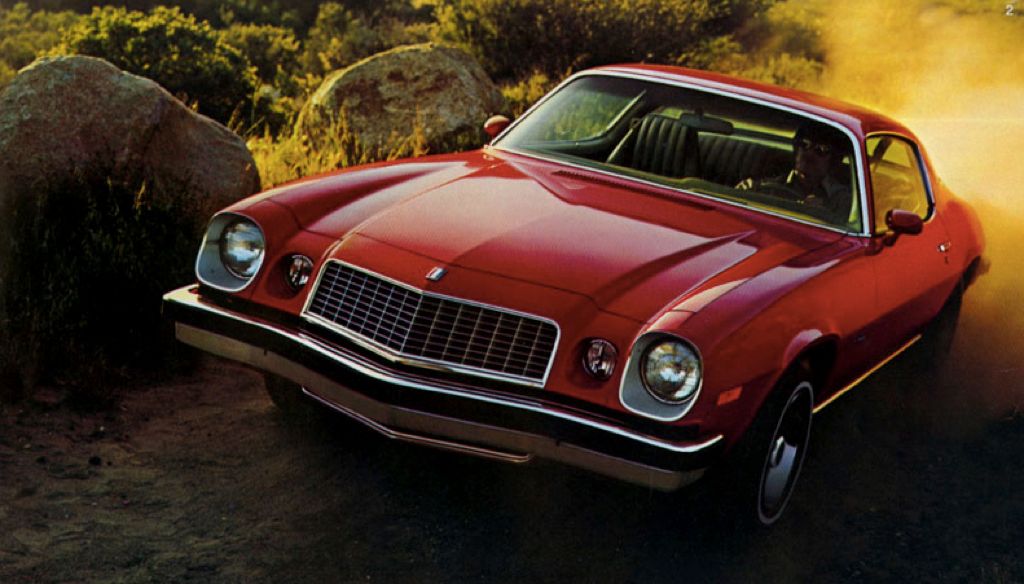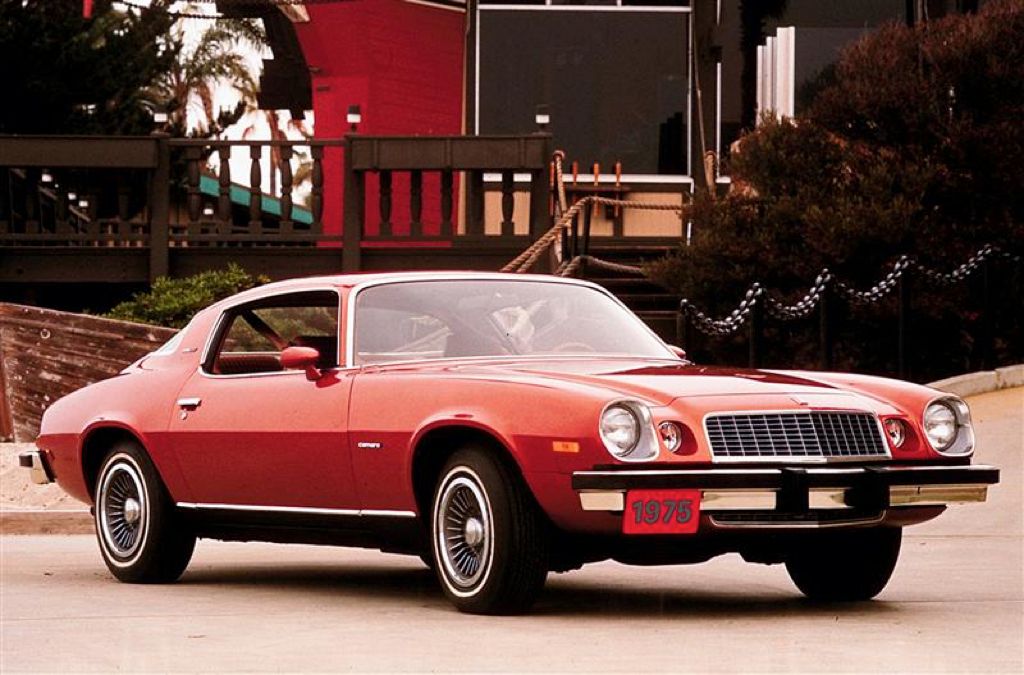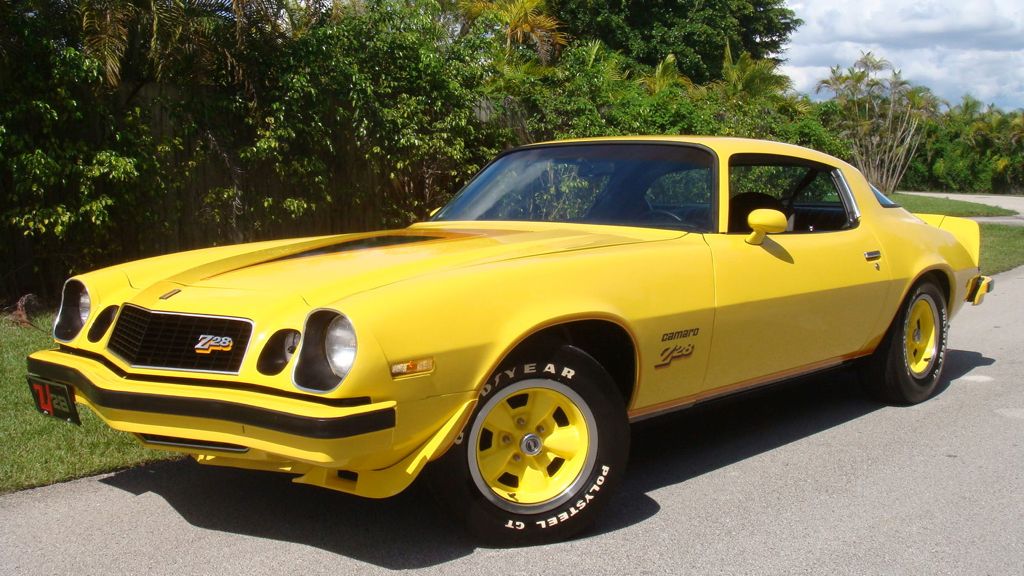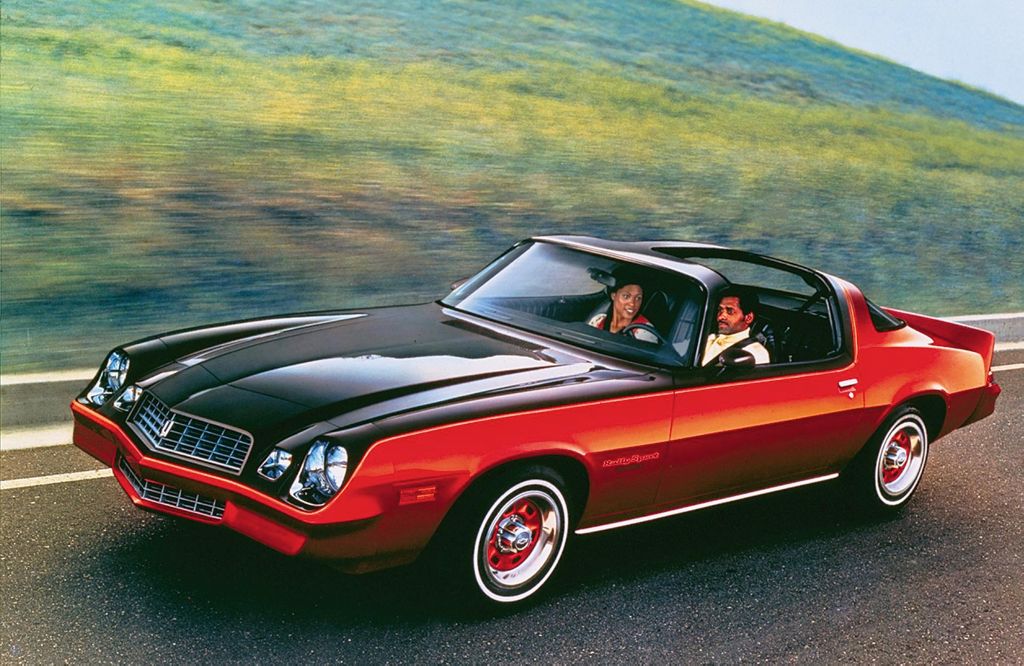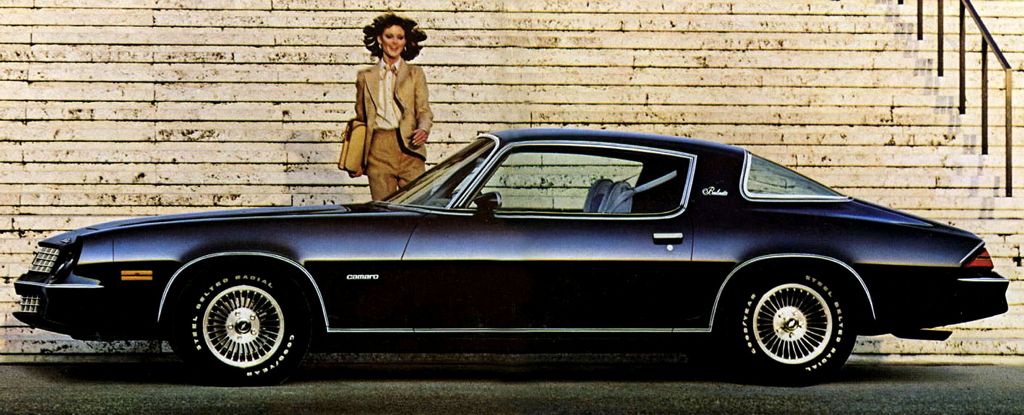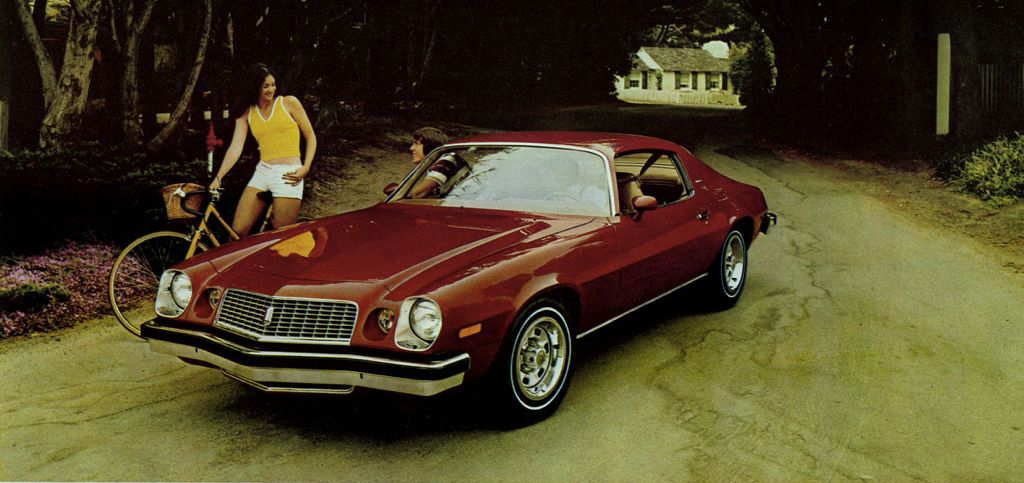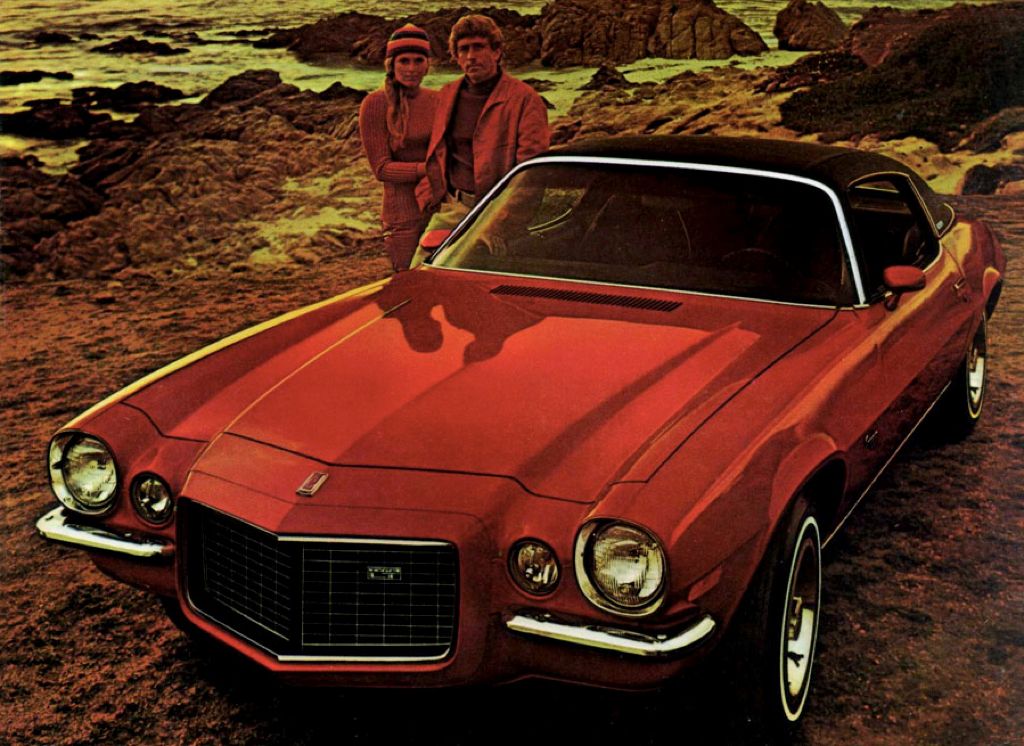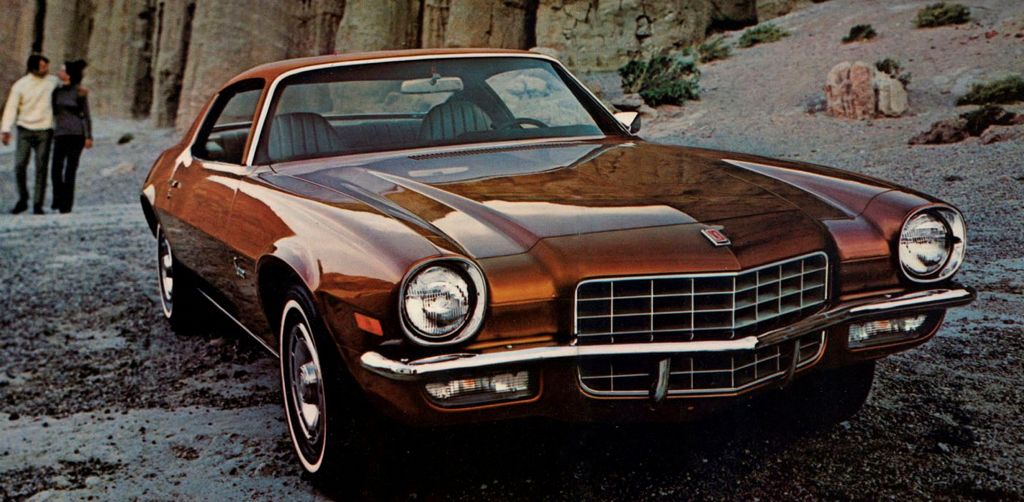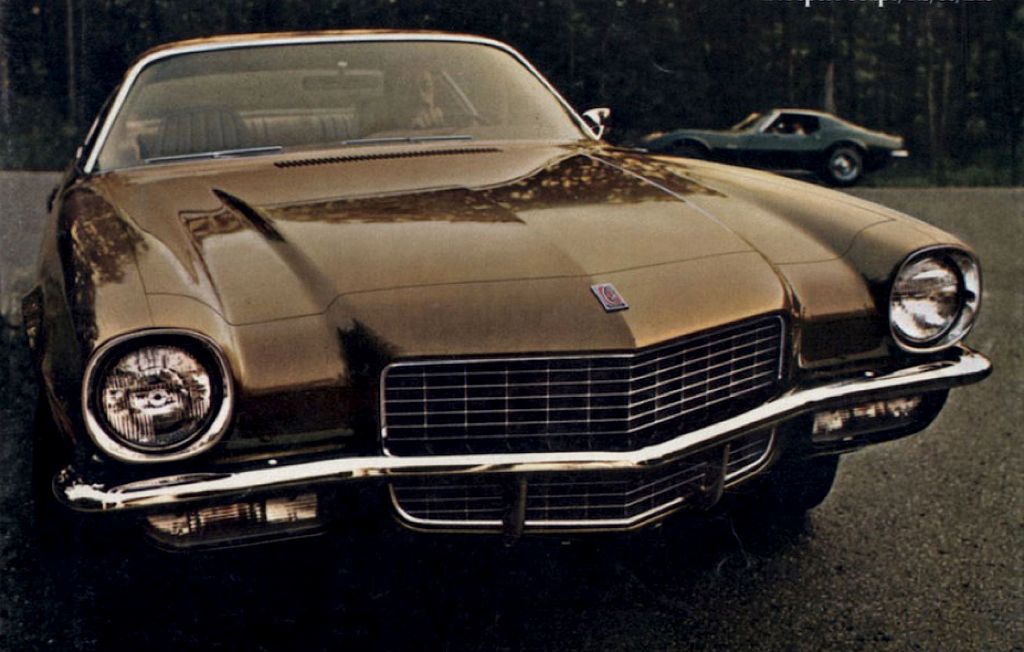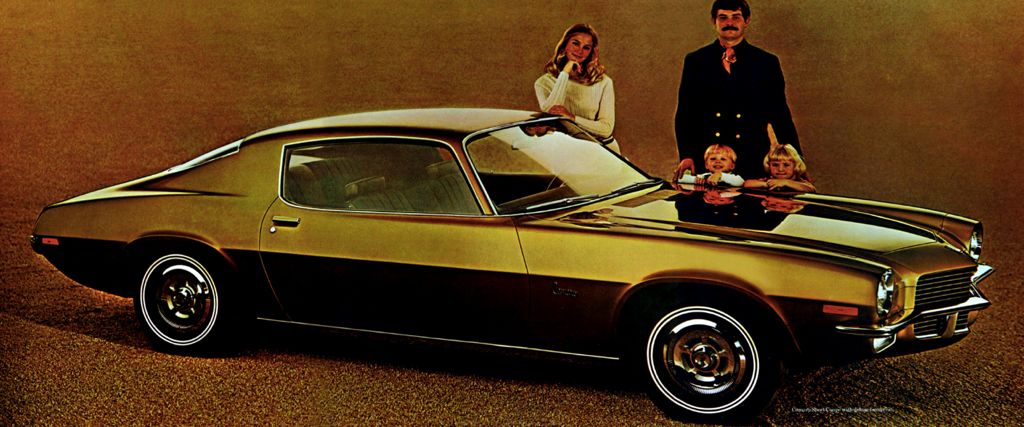Chevrolet’s Camaro was a late arrival to the pony car market created by Ford’s Mustang. The first Camaro arrived in 1967, hastily cobbled together based on bits and pieces from the forthcoming Chevy II/Nova. But the arrival of the second-generation Camaro showed that Chevy was not interested in playing the second chair to anyone else in the segment.
The 1970 Camaro was low and sleek, with a long hood and a driver-focused interior, and it attracted a lot of attention...and buyers. That voluptuous body would carry the Camaro name into the beginning of the 1980s, with varying degrees of excitement and desirability.
10 10. 1976
The Camaro free-fall hit rock bottom in 1976, when Chevrolet’s engineers decided the key to keeping their pony car relevant in a post-OPEC universe was by under-boring the legendary small-block V8, shrinking its displacement from 5.7 liters (350 ci) to 5.0 liters (305 ci).
This new engine was standard on the up-level Type LT (Luxury Touring) and cranked out a woeful 140 horsepower. The 350 was still available, but the base model’s standard engine was the venerable 4.1-liter straight-six, an engine that premiered on the 1962 Chevy II and produced just 105 horsepower.
Buyers could opt for a “Rally Sport” appearance group, but underpowered engines in a 3,600-pound package meant the “sport” was lacking, especially when compared with its sister Pontiac Firebird.
9 9. 1975
“You’re driving more slowly now, and perhaps you’re driving less.” That’s the opening line in the brochure for the ’75 Camaro, one of two years (1976 was the other) when the Z28 performance package was not available. It’s a sign that Chevy was struggling to position its pony car as gas prices soared, and government regulations created more challenges.
The brochure went on to say that “Camaro is and always was a small car.” Looking back, that seems a laughable assertion in a car that’s an inch longer than a 2019 Malibu. That “small” car could be equipped as a base Sport Coupe or Type LT and powered with either the six or the 350 V8. The only outward change from ’74 was a backlight that wrapped around to the sides of the roof, bringing a teensy bit more daylight into the cabin.
8 8. 1977
Chevrolet looked at the success of Pontiac’s Firebird Trans Am and decided they’d miscalculated when they dropped the Z28 package two years earlier. So it came back at midyear with a new graphics package, color-keyed bumpers and a 5.7-liter V8 that was largely similar to the one fitted to other Chevys. But few buyers knew what they were missing, and the new Z attracted a lot of attention.
The rest of the line was a carryover from ’76: Base and Type LT models, with six-cylinder and V8 engines available.
7 7. 1978
For 1978, Chevrolet’s stylists finally found a way to make the Camaro’s five mile-per-hour bumpers more attractive: By covering them in urethane front and rear. The makeover included larger tri-color wraparound taillights and a move for the rear license plate to the bumper. Now a full-year option, the Z28 took pride of place in the Camaro’s brochure, with an updated look including fender louvers and a nonfunctional hood scoop.
Camaro buyers could also order factory T-tops for the first time in ’78, though they’d first been offered on the Trans Am two years earlier. The other trim levels (base, Type LT and Rally Sport) remained, as did the selection of six-cylinder and V8 engines.
6 6. 1979
The last year of the decade brought a new luxury trim level to Camaro: “Berlinetta” replaced the Type LT and featured more upscale upholstery, specific pinstriping, and flashy chrome badges. On the other side of the spectrum, the Z28 began to more closely resemble its Trans Am sibling, with new striping and front and rear fender spats.
Regardless of the model, though, all Camaros got new dashboards with a revised center area, replacing the more driver-focused affair. The redesign was intended to more easily accommodate additional vents for air conditioning, which was becoming a popular option on all Camaros.
5 5. 1974
The government’s new low-impact collision standards kicked in for ’74, meaning the second-generation Camaro’s aggressive nose and open-mouth grille got a makeover, in the form of a beefy chrome bumper that looked like the automotive equivalent of a teenager’s retainer.
This was the last year of the Z28 option before its two-year hiatus, available on both base and Type LT models with bold graphics and a 350 V8 derived from the Corvette’s L82 engine. It's also one of the years a Rally Sport option was unavailable, as the 1970-73's dramatic split-bumper front fascia wouldn't pass muster with the new NHTSA guidelines.
4 4. 1973
The 1973 model year started with a big stumble: The suburban Cleveland plant that built the Camaro and Firebird was idled in 1972 by a strike that lasted nearly six months. That meant GM was unable to do much of substance with the Camaro as the ’73 model year began. So the outside was a carry-over, keeping the larger "egg-crate" grille introduced the previous model year.
In the showroom, the biggest change was the disappearance of the SS model, in favor of the luxury-oriented Type LT. This, too, was the last year for the 5.0-liter (307 ci) V8, which was a direct descendant of the V8 installed in the 1955 Chevrolet. It was also the first year of the Camaro’s existence that the two-speed Powerglide automatic transmission was unavailable, giving way to the three-speed Turbo Hydra-Matic.
3 3. 1972
Though it was almost impossible to know at the time, the ’72 Camaro would represent the last gasp of performance for the second-generation pony car. This was the final year buyers could equip their Camaros with the big-block “396” V8, which actually displaced 6.6 liters (402 ci), and in '72 produced 240 net horsepower in the SS.
Any Camaro could be equipped with the Rally Sport appearance package, featuring split bumpers and a full-length grille opening. But remember that strike mentioned above? Its onset during the spring of ’72 meant Chevy lost thousands of potential units…and had to scrap several hundred Camaros left unfinished on the assembly line because they did not match new-for-’73 regulations. That makes the ’72 a bit of a unicorn.
2 2. 1971
Camaro’s first full model year brought one major change that was invisible to the thousands of people who bought one: GM lowered compression ratios for all of its V8 engines so that it could burn low-lead and unleaded gasoline. That dropped power ratings for the SS’s “396” V8 from 350 to 300 gross horsepower (260 net).
The one change prospective buyers could see was inside, where high-back bucket seats replaced low-back seats with adjustable headrests. Also, buyers could have a vinyl roof installed in one of five colors.
1 1. 1970
The 1970 Camaro didn’t arrive in showrooms until February of that year, which is why most people call it a “1970 1/2” (under current auto industry convention, it would probably be called a ’71). Whatever the model year, it was the strongest and most pure distillation of the second-generation pony car.
Sporting a long and powerful hood, graceful bumpers and sensuous curves, the Camaro appeared to be moving even when parked — and it looked nothing like the previous year’s Camaro while still looking like a Chevrolet. With the RS’ signature split bumpers, the Camaro looked like a custom street rod right off the showroom floor.
Sales literature played up the connection to the Corvette, and the SS and Z28 models had Corvette-derived V8 engines. If you can find one that hasn’t been resto-modded or turned into a Z28 or SS clone, hang on to it: It’s only going to get more valuable.


